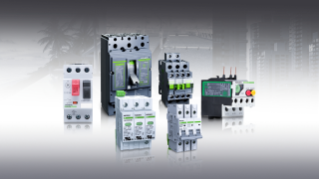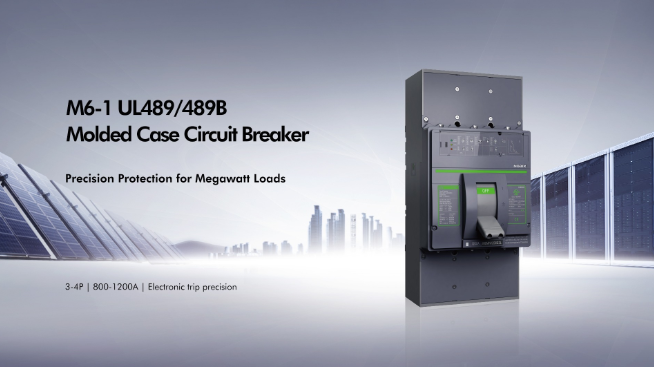Table of Contents |
Circuit breakers are an integral part of any electrical system. A circuit breaker will trip or stop the flow of electricity if a current reaches a certain overload or overcurrent setting or if there’s a short circuit. While basic circuit breakers trip at a set voltage, adjustable circuit breakers allow you to change the trip curve, making it a more versatile device in your system.
Below, we’ll cover the basics of adjustable trip circuit breakers and some tips for use, maintenance, and troubleshooting.
What is an Adjustable Trip Circuit Breaker?
An adjustable trip circuit breaker lets you adjust the parameters for currents and short circuits. While there are electronic circuit breakers that allow for several customizations, you can change the setting on adjustable trip circuit breakers manually.
This type of circuit breaker has several main components—contacts, an arc extinguisher, a trip unit, and a current-adjusting mechanism. Electricity flows through the contacts.
In the event of an overload or short circuit, a trip unit will open the contacts. This interrupts the flow of electricity. Depending on whether the circuit experiences an overload or a current, a bimetallic strip may heat and open the contact, or an electromagnetic coil may open the contacts.
There is also a small screw or other adjusting device that lets you change the voltage that will activate the trip unit and stop the electrical flow.
How to Set Up and Adjust an Adjustable Circuit Breaker
Unless you are an electrician or have extensive electrical experience, always hire a professional to install your adjustable trip circuit breaker. Once installed, you must set it up to work with your equipment. There are several settings you should consider as you set up your breaker. A proper setup will ensure that your breaker trips properly and keep electricity flowing correctly through your system.
The first setting to consider is continuous amps. This rating is the highest level current the breaker can withstand before tripping. You can adjust continuous amps between 20-100% of the highest current.
The next setting is a long-time delay. This setting lets you specify how long the breaker can withstand an overcurrent without tripping. You may adjust this if there are slight fluctuations that don’t require tripping.
Next is the short-time pickup setting. Sometimes, you need a higher current to pass through the breaker for a short period. This setting allows you to raise the max current temporarily. The short-time delay setting works with short-time pickup. It lets you set the time for the delay, while short-term pickup enables you to adjust the current setting.
Instantaneous pickup works with the previous two settings. It acts as an override and can be set from two to 40 times the continuous amps. When the current reaches the set point, it will automatically trip without delay.
The final setting is for the ground fault pickup. This setting allows you to adjust the breaker to manage a ground fault current. You can set the ground fault pickup between 20% and 70% of the maximum breaker capacity and the device will trip if the ground fault current exceeds this level.
Applications and Suitable Environments for Adjustable Circuit Breakers
You can use adjustable trip circuit breakers in almost any electric setup with energy fluctuations. They also allow for versatility in situations where you need to use two or more products with different rated currents.
A data center is one example of where you can use an adjustable trip circuit breaker. The center needs steady, reliable power, but currents may fluctuate. If a breaker trips unnecessarily and there is a power loss, computers, and servers may fail to function properly.
In systems where motors run intermittently, there may be a momentary current spike as motors turn on. The short-time pickup and delay settings allow you to adjust for these brief power spikes and avoid tripping the breaker.
Another common situation happens with conductors. You may need to run the breaker at a lower setting than its max current with the conductors. Use the continuous amps setting to lower the acceptable max current.
Maintenance and Troubleshooting for Adjustable Circuit Breakers
Regular maintenance ensures that your adjustable circuit breaker works properly, and you’ll get the most life out of the breaker. Clean it daily to remove dirt and dust and inspect for cracks or damage.
When working with a high-voltage breaker, regularly run tests at least once every six months. This allows you to troubleshoot any problem ahead of time or before it gets worse. You can use an analyzer test to check how long the open and close mechanism takes to operate and ensure that the poles are synchronized.
Also, use a micro-ohm meter to monitor the breaker’s resistance and discover any hot spots in your setup. Electrical systems often operate at high temperatures. Extreme heat can lead to the deterioration of wires and other equipment. An infrared inspection allows you to monitor the system for hot spots and replace equipment.
Conclusion
Adjustable circuit breakers provide versatility and efficiency in your electrical system. With less unnecessary tripping, you can streamline your workflow. Through proper settings and regular maintenance, you’ll be able to get the most out of your breaker.
Chint Global specializes in reliable, durable electrical equipment, including a line of adjustable trip circuit breakers. Our NBTL adjustable circuit breaker can help you protect your system against short circuits, overloads, and leakage. You can use it with products with AC currents of 50/60Hz and a rated voltage of 230/240V.
Contact Chint Global today to learn more about our products and to find the one that works for you.
FAQ about Adjustable Circuit Breaker
How do adjustable circuit breakers differ from fixed ones?
Is there a risk of misadjustment with adjustable circuit breakers?
What should I do if my adjustable circuit breaker trips frequently?






.jpeg)

.jpeg)
.png)
.png)
.png)


